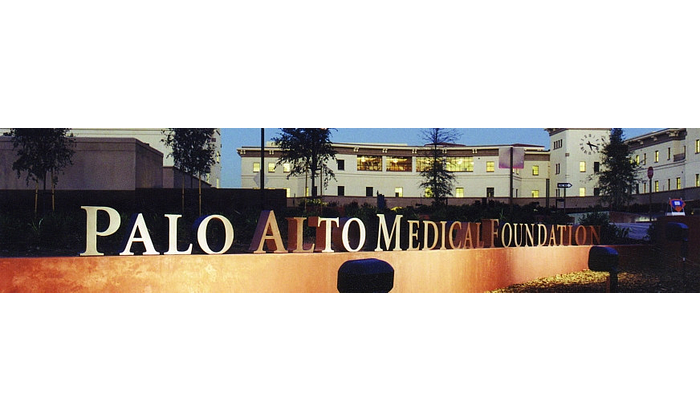Varian’s RapidPlan™ knowledge-based planning is helping clinicians at centers around the world take treatment planning to new levels of consistency, efficiency, and quality. RapidPlan was designed to break through productivity barriers and streamline the treatment planning process by enabling clinicians to use standard models as a guideline and starting point for developing high quality treatment plans. This can reduce or even eliminate the need for multiple, time-consuming iterations.
A number of studies have shown that knowledge-based treatment planning both increases planning efficiency and results in higher quality, more consistent plans—making the art and experience of the planner less of a factor in the quality of the result.1,2
RapidPlan knowledge-based planning allows clinicians to develop their own models from their database of plans or to use shared models developed at other institutions. Since the introduction of RapidPlan in 2014, the availability of shared models has grown, enabling centers to make gains in planning consistency and efficiency.
Palo Alto Medical Foundation

At Palo Alto Medical Foundation (PAMF) in Palo Alto, California, three physicists review all the intensity modulated radiotherapy plans for two clinic locations, making tweaks to some and completely replanning others as necessary. “We always achieve quality plans, but for the more complex treatments, it has been at high cost in time and resources,” says Chantal Audet, PhD, chief medical physicist at PAMF. “Our challenge is to get high quality plans more consistently from Dosimetry and free up our physicists.” Getting to quality plans faster and with less effort for the physics staff has short- and long-term benefits, says Audet. It provides a buffer for managing the inevitable peaks in workload that occur especially with HDR and radiosurgery patients. It also permits physicists to reallocate their time to expanding the range of care options for patients and making technical or process improvements in general.
To increase planning efficiency and speed time to quality, PAMF has adopted RapidPlan, along with shared models from the University of California San Diego (UCSD) and from Northwestern Medical Center. “Using the UCSD prostate model at first for training, we saw a consistent 20 percent reduction in mean dose to the rectum, compared to our own control planning. With that tangible improvement, we decided that we couldn’t not use this model,” says Audet. “Though the model has more aggressive dose constraints, we’re able to make minor adjustments to cool the dose in the PTV.” As plans are “tweaked,” they are added to the RapidPlan knowledge base to form the basis for a PAMF prostate model. To date, PAMF has used the UCSD RapidPlan prostate model to plan 30 patients. “I've been really happy with the improvement,” says Audet.
Audet is pleased with the UCSD head-and-neck model, as well, because it is faster at producing plans that are close to PAMF “from-scratch” plans. “Head and neck treatment planning is so complicated that to achieve the same or slightly better results from the get-go is a huge improvement,” says Audet.
In addition to the prostate and head-and-neck models from UCSD, PAMF has also used a shared RapidPlan model for whole brain with hippocampal sparing that was developed by Northwestern Medical Center. “We don’t get many of these cases, so finding this model was a great help to our planning,” says Audet. “The model outperformed my planning by hand, so we went with the model.” Audet plans to continue using the NMC model for future whole brain hippocampal sparing patients whose numbers are expected to increase.
When shared RapidPlan models save time and prove they yield plans of the same or higher quality, PAMF embraces them. However, they are also interested in developing their own models to share. PAMF has its sights set on developing a model for large lung and mediastinum masses.
Audet sums up the value of knowledge-based planning in one word: consistency. “In some places, knowledge-based planning may mean consistently higher quality plans. In some places, it may mean that high-quality plans are easier to get. It may also mean that someone with very little experience can produce a high-quality plan instantly. Knowledge-based planning facilitates high quality planning within a clinic and across the world.”
Instituto De Radiomedicia
 The Instituto De Radiomedicia (Clinica IRAM) in Santiago, Chile, has turned to knowledge-based treatment planning to overcome its greatest challenge—managing workload and improving efficiency. At Clinica IRAM, ten oncologists, five dosimetrists, and three physicists plan radiotherapy treatments for 250 patients per month. They treat the full gamut of cancer cases, including pediatrics, and offer the full complement of techniques, including SRS, SBRT, RPM breath hold and RapidArc® IMRT. The clinic acquired RapidPlan in 2016 and, within three months, was using it clinically to plan prostate, lung, accelerated partial breast, and head-and-neck treatments. Staff radiation oncologist and clinician investigator Claudio V. Solé P. MD, PhD, credits models from UCSD for the swift clinical adoption of RapidPlan.
The Instituto De Radiomedicia (Clinica IRAM) in Santiago, Chile, has turned to knowledge-based treatment planning to overcome its greatest challenge—managing workload and improving efficiency. At Clinica IRAM, ten oncologists, five dosimetrists, and three physicists plan radiotherapy treatments for 250 patients per month. They treat the full gamut of cancer cases, including pediatrics, and offer the full complement of techniques, including SRS, SBRT, RPM breath hold and RapidArc® IMRT. The clinic acquired RapidPlan in 2016 and, within three months, was using it clinically to plan prostate, lung, accelerated partial breast, and head-and-neck treatments. Staff radiation oncologist and clinician investigator Claudio V. Solé P. MD, PhD, credits models from UCSD for the swift clinical adoption of RapidPlan.
“RapidPlan is a great software tool for access to preconfigured plan models,” says Solé. “The consistency of our planning has improved significantly, which has helped us standardize clinical, network, and operational processes for greater productivity and efficiency.” Solé reports that planning time has been reduced by about 50 percent while PTV coverage and normal tissue sparing has been improved in many cases.
“RapidArc IMRT treatments that used to take two days to plan in our workflow now take one day using RapidPlan,” says Solé by way of example. The greatest improvements in efficiency have come in prostate, lung, and head & neck plans. “For these sites, our plans were very consistent to protocol before RapidPlan; with RapidPlan we have gained speed.”
Clinica IRAM plans to expand use of RapidPlan for esophageal and gynecological planning, and they have developed their own RapidPlan model for CNS. In conclusion, Solé states, “Knowledge-based planning is a valuable tool to expand IMRT-SBRT use with minimal impact on current staffing levels.” This makes RapidPlan welcome at a time when demand for care is increasing and trained dosimetrists and physicists are in short supply.
Notes
1Weksberg, David C. et al. Generalizable class solutions for treatment planning of spinal stereotactic body radiation therapy. Int J Radiation Oncol Biol Phys. 2012; 84(3):847-853.
2Good, David et al. A knowledge-based approach to improving and homogenizing intensity modulated radiation therapy planning quality among treatment centers: An example application to prostate cancer planning. Int J Radiation Oncol Biol Phys. 2013;87(1):176-181.